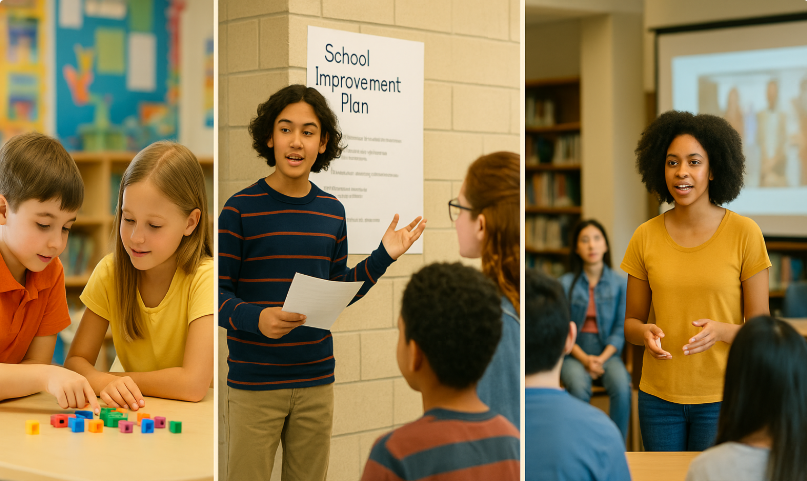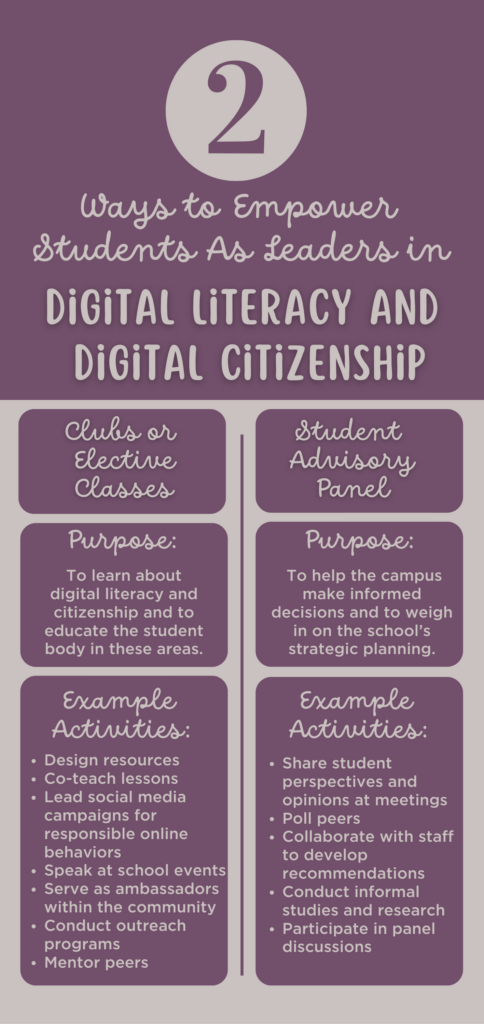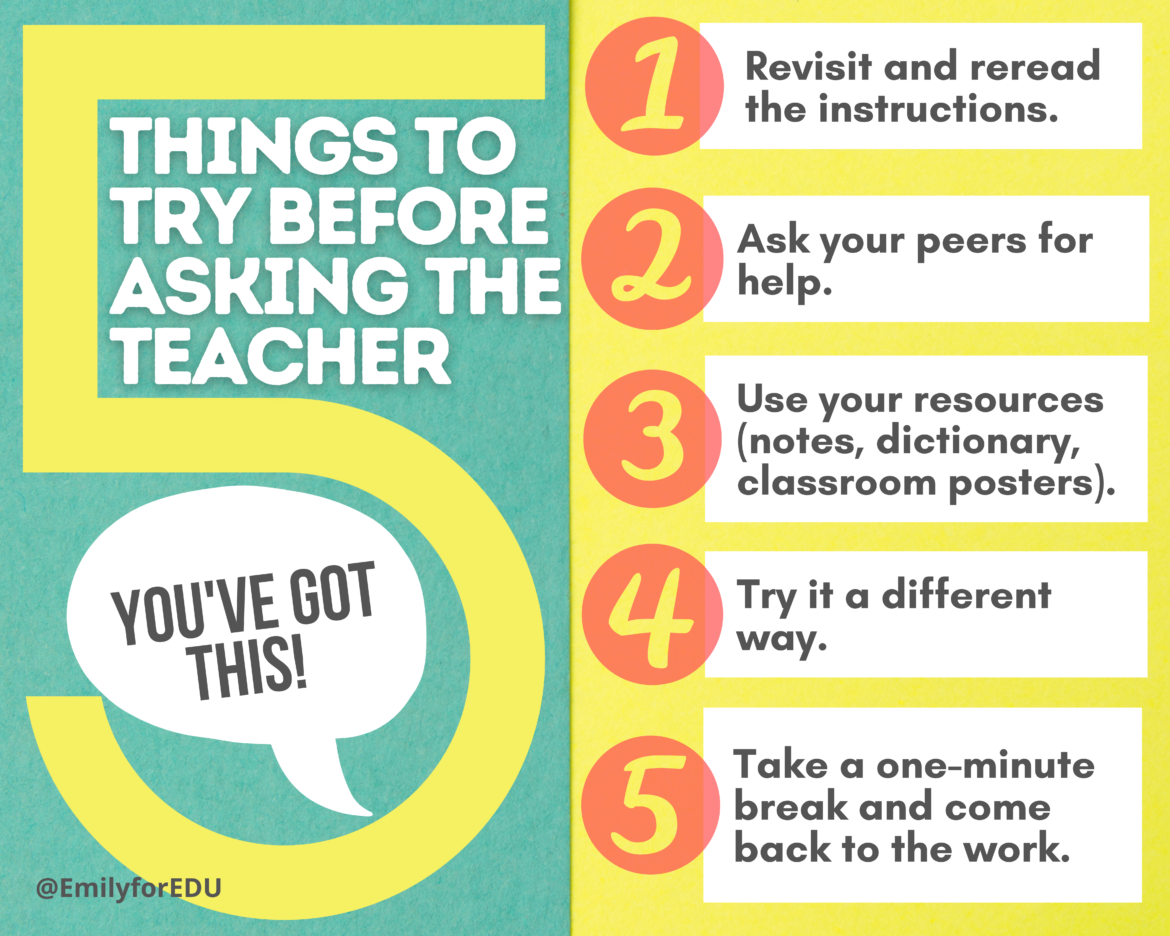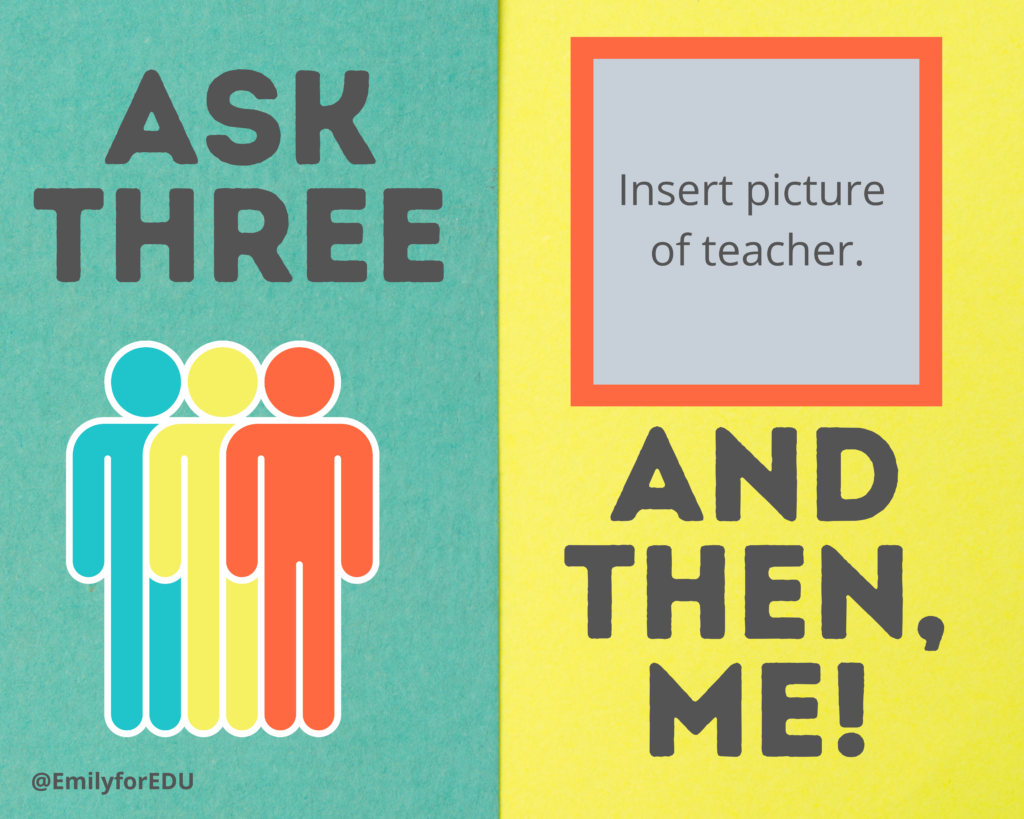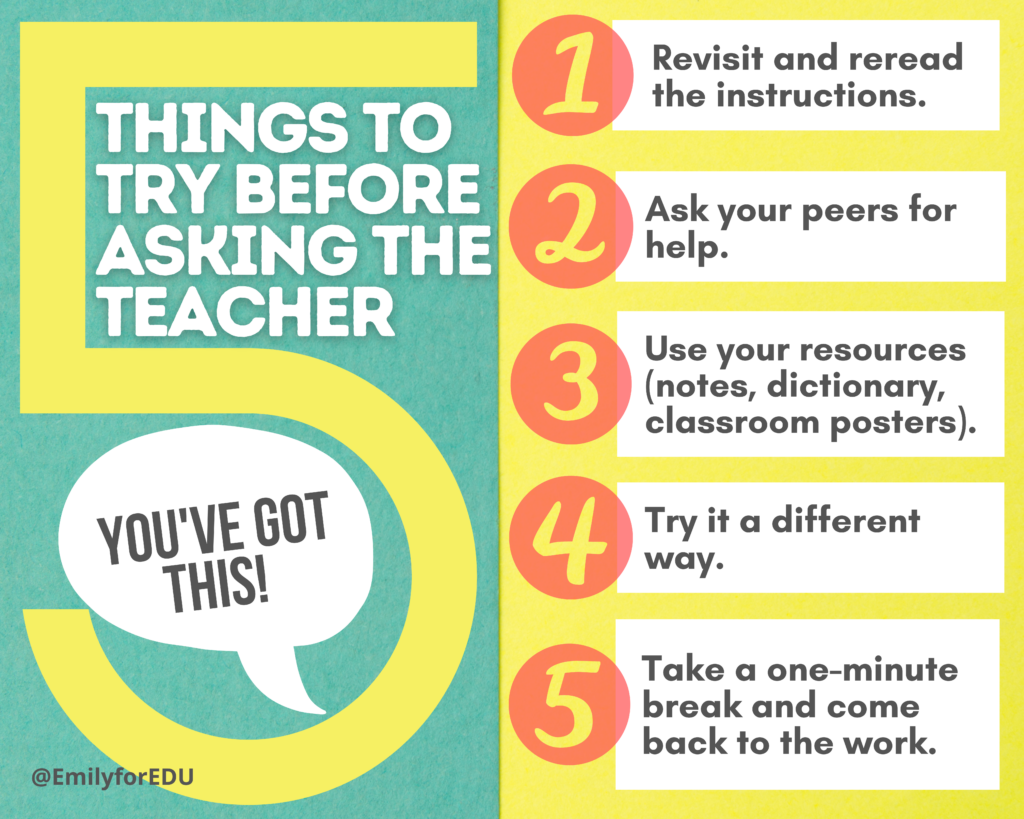When a third-grader notices a classmate struggling with math manipulatives and quietly offers help, then reorganizes the math station without being asked, we’re witnessing authentic leadership in action. These moments happen daily in classrooms that prioritize Good Teaching practices—where educators create opportunities for student leaders to step up, take responsibility, and support their learning community.
We see early signs of leadership everywhere—when a kindergartener takes charge of distributing supplies, when a middle schooler mediates a playground conflict, or when a high school student organizes a fundraiser for a local cause. Leadership isn’t about titles or positions. It’s about action, influence, and responsibility, and it looks different at each stage of a student’s development.
What Student Leadership Actually Looks Like

Student leadership shows up differently across grade levels, but certain core characteristics remain consistent. Student leaders take initiative to solve problems rather than waiting for adults to step in. They communicate clearly and respectfully, even when delivering difficult messages. They show empathy by considering how their actions affect others and demonstrate responsibility by following through on commitments.
Effective student leaders help peers reach shared goals and regularly reflect on their impact and actions. They stick with challenging problems and show resilience when solutions don’t come easily. Most importantly, they understand that leadership sometimes requires standing alone when decisions are based on evidence and careful thinking rather than popularity.
Student leadership might look like a fifth-grader who notices recess arguments disrupting afternoon learning and proposes a peer mediation system. Or a seventh-grader who organizes study groups for struggling classmates without being asked. These leadership skills aren’t reserved for student council presidents or honor society members. Every student can develop leadership traits when we create the right conditions and opportunities. Leadership is a practice that grows stronger with intentional cultivation.
Creating a Culture That Grows Leaders
Building student leaders starts with establishing a classroom culture where leadership can flourish. This means providing meaningful responsibilities that matter to the learning community. When students manage classroom supplies, they’re not just completing busy work—they’re ensuring their peers have the tools needed for learning.
Normalize student voice and choice in daily operations. Let students contribute to classroom rules, suggest improvements to procedures, and propose solutions to problems they identify. Celebrate effort and improvement, not just final outcomes, while maintaining high standards for quality work.
Offer regular reflection opportunities through goal-setting conversations, self-assessment tools, and peer feedback sessions. Model servant leadership by demonstrating that effective leaders often work behind the scenes, staying late to clean up after events or ensuring everyone else’s needs are met first.
Elementary School: Building Confidence and Responsibility
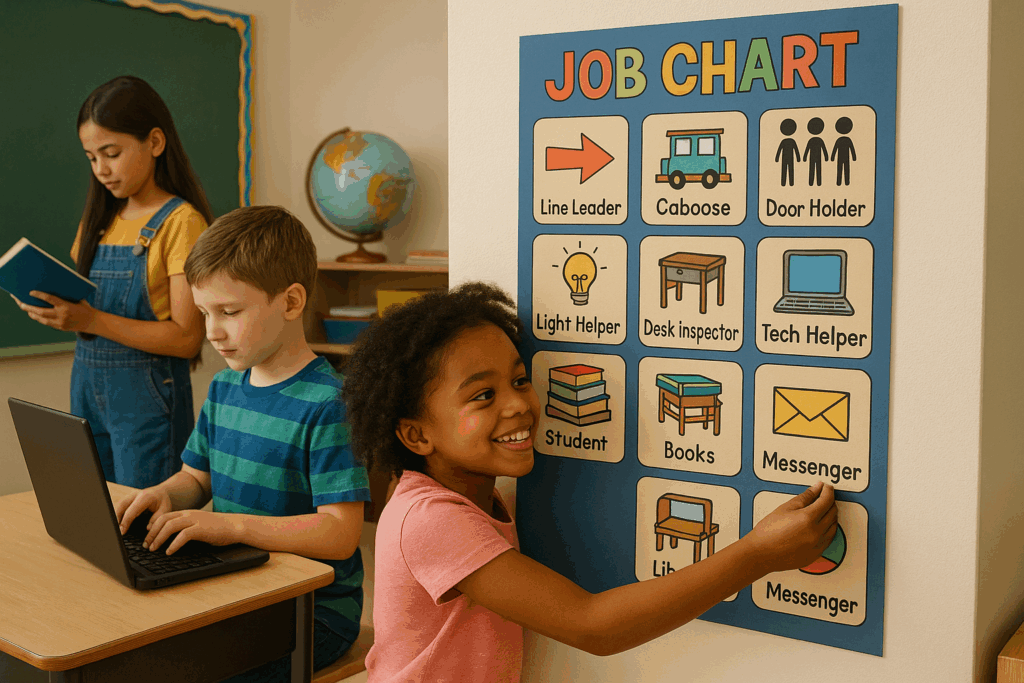
Young students develop leadership through safe, simple, and supported opportunities. At this stage, focus on building confidence, basic responsibility, and teamwork skills. Students are learning to manage emotions, communicate needs, and work cooperatively—foundation skills that support future leadership development.
Meaningful Daily Roles
Assign rotating classroom jobs that genuinely contribute to the learning environment. The pencil monitor doesn’t just sharpen pencils—they ensure everyone has the tools needed for writing tasks. The class librarian organizes books and helps peers find specific titles during independent reading. The technology helper troubleshoots simple computer issues and shows classmates how to log into programs.
Create these roles with clear expectations and regular check-ins. Post job descriptions with pictures for non-readers and rotate positions weekly so every student experiences different types of responsibility.
Leadership in Learning
Let students take turns leading morning meetings, sharing the daily schedule, or facilitating simple discussions about classroom topics. When teaching new procedures, ask students who have mastered the skill to demonstrate for their classmates.
Students can become “expert helpers” in different subject areas, supporting peers who need additional practice or explanation. These roles build academic confidence while developing communication and patience skills.
Technology Tools for Leadership Development
- Padlet (Freemium) – Create simple idea boards where students can post examples of leadership moments or acts of kindness they’ve witnessed in the classroom. Use these contributions for class discussions and recognition.
- Seesaw (Free basic plan) – Students can record video or audio reflections about their leadership experiences, take photos of their work, or create simple drawings to document their growth. The digital portfolio feature helps track leadership development over time while giving students practice with digital communication skills.
Low-Tech Assessment and Growth Tracking
Create a simple leadership tracking chart where students place stickers next to their names when they demonstrate leadership behaviors. Use a classroom journal where students write or draw examples of how they helped others or took initiative.
For assessment, observe and document leadership moments through brief anecdotal notes. Look for students who help without being asked, include others in activities, or persist when tasks become challenging. Share these observations during parent conferences as evidence of character development.
Measure growth by tracking increases in:
- Students volunteering for classroom responsibilities
- Peer-to-peer helping behaviors
- Initiative-taking during unstructured time
- Problem-solving attempts before asking for adult help
Middle School: Developing Voice and Ownership

Middle school students crave recognition, voice, and trust. They’re developing their identity and want to contribute meaningfully to their community. This developmental stage creates perfect conditions for expanding leadership roles and deepening student ownership of their learning environment.
Peer Leadership Opportunities
Establish buddy systems where middle schoolers mentor elementary students in academic skills or social navigation. These partnerships benefit both age groups—younger students receive additional support while middle schoolers develop teaching and communication skills.
Let students co-lead morning announcements, facilitate advisory discussions, or present information about school events to their peers. These opportunities build public speaking confidence while contributing to school communication.
Project-Based Leadership
Use authentic projects where students identify real problems and develop solutions. When students notice issues like lunch waste, bullying behaviors, or lack of school spirit, challenge them to research the problem, propose solutions, and implement changes with measurable outcomes.
Students can form research teams, communication committees, and implementation groups based on their interests and strengths. Rotate leadership roles within these teams so multiple students experience coordinating responsibilities.
Technology Tools for Middle School Leaders
- Loom (Free for educators) – Students can create instructional videos for peers or record reflections on their leadership experiences. These videos help develop communication skills while building digital portfolios.
- Google Sites (Free) – Students can create websites to showcase their leadership projects, share resources with peers, or document their growth over time.
- Screencastify (Free plan) – Students can record short presentations about leadership challenges they’ve faced or solutions they’ve developed.
Low-Tech Alternatives
Create leadership reflection journals where students write weekly entries about challenges they faced, problems they solved, and goals for improvement. Use peer feedback forms where classmates identify leadership qualities they observed in each other.
Establish speaking circles where students practice facilitating discussions and presenting ideas to their peers. These face-to-face interactions often create deeper connections than digital alternatives.
Assessment and Growth Measurement
Develop simple rubrics that measure leadership growth in areas like initiative, communication, and collaboration. Students can self-assess monthly and set goals for the next month based on their reflections.
Measure success by documenting:
- Frequency of student-initiated problem-solving
- Quality of peer-to-peer collaboration
- Students’ ability to facilitate group discussions
- Growth in public speaking confidence and clarity
High School: Leading Beyond the Classroom
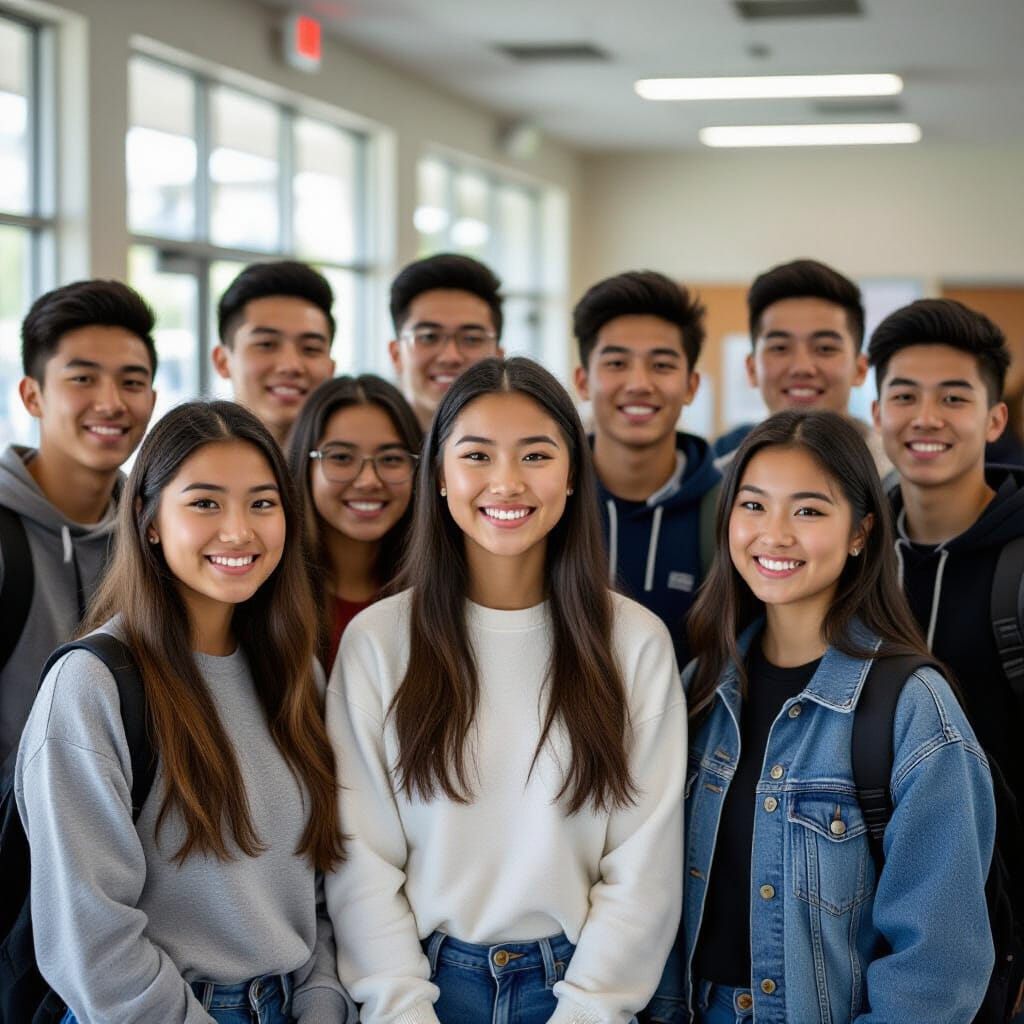
High school students are ready for significant responsibility and authentic leadership experiences. They thrive when given meaningful agency, real decision-making power, and adult mentors who coach rather than control their efforts.
Authentic Community Leadership
Support students in leading school events, advocacy campaigns, or community service projects with measurable impact. Students might address issues like college application stress, environmental concerns, or social justice topics that matter to their community.
These projects should include research components, solution development, implementation phases, and outcome evaluation. Students learn project management, public speaking, research skills, and collaborative problem-solving while addressing genuine community needs.
Academic Leadership Programs
Establish peer tutoring systems where academically strong students support their classmates in challenging subjects. Train these tutors in effective teaching techniques, patience, and communication skills. Track both tutor and tutee progress to measure program effectiveness.
Create opportunities for students to lead professional development sessions for teachers, sharing their perspectives on effective instructional strategies or technology tools. Students often have insights about learning that can improve adult practice.
Technology Tools for High School Leadership
- Canva for Education (Free) – Students can create professional-quality materials for campaigns, events, or presentations. This tool helps them develop design skills while producing authentic work products.
- Trello (Freemium) – Students can organize team projects, set goals, track progress, and coordinate with team members. This introduces project management skills valuable for college and career success.
Portfolio Development and Reflection
Help students create leadership portfolios that document their growth over time. Include project summaries, reflection essays, peer feedback, and evidence of impact. These portfolios serve as powerful tools for college applications and scholarship opportunities while helping students articulate their leadership development.
Students should regularly reflect on questions like: “What leadership challenges have you faced, and how did you address them?” “How has your leadership style evolved this year?” “What evidence shows the impact of your leadership on others?”
Low-Tech Options for All Schools
Not every school has robust technology access, but leadership development doesn’t require expensive tools. Create leadership notebooks where students track their experiences, challenges, and growth over time. Use poster presentations for students to share their projects and leadership learning with authentic audiences.
Establish speaking circles where students practice facilitating discussions and presenting ideas to their peers. These face-to-face interactions often create deeper connections and more meaningful learning than digital alternatives.
High School Assessment Strategies
Measure high school leadership development through:
- Quality and impact of student-led projects
- Improvement in communication and presentation skills
- Evidence of positive influence on school culture
- Student ability to reflect on and articulate their leadership growth
Overcoming Common Challenges

“I don’t have time for leadership development.”
Leadership development doesn’t require additional instructional time when integrated into existing curriculum and routines. Students can practice leadership skills while completing regular academic work—facilitating group discussions, peer editing, or presenting research findings. The key is being intentional about creating leadership opportunities within activities you’re already doing.
Start small with one leadership opportunity per week, such as having different students lead the opening routine or facilitate a brief discussion about the previous day’s learning.
“Students aren’t ready for real responsibility.”
Students rise to meet appropriate expectations when given proper support and clear boundaries. Begin with smaller responsibilities and gradually increase expectations as students demonstrate readiness. Provide explicit instruction about what leadership looks like and regular feedback about performance.
Remember that mistakes are part of the learning process. When student leaders make poor decisions, use these moments as teaching opportunities rather than reasons to remove leadership responsibilities.
“Administration or parents don’t support student leadership.”
Document and share evidence of student growth and positive outcomes from leadership opportunities. Take photos of students engaged in leadership activities, collect data about improved classroom climate or academic performance, and gather testimonials from students about their experiences.
Start with low-risk leadership opportunities that clearly support academic goals, then gradually expand as stakeholders see positive results.
“Some students dominate while others stay silent.”
Structure leadership opportunities to ensure broad participation. Use rotating roles, small group leadership positions, and behind-the-scenes responsibilities that match different personality types. Some students lead through organizing, others through encouraging, and still others through creative problem-solving.
Create multiple pathways to leadership so that quiet students, creative thinkers, and natural organizers all have opportunities to contribute their strengths.
Making Leadership Part of Daily Practice

Student leadership flourishes when it becomes woven into the fabric of daily classroom life rather than reserved for special programs or designated roles. Use exit tickets that ask students to identify how they showed leadership or helped others learn during the day. Let students manage classroom routines like attendance, supply distribution, or technology troubleshooting.
Build in weekly reflection time where students consider their leadership growth and set goals for improvement. Highlight specific leadership moments during class discussions or in communications with families. When students see that leadership is valued and recognized consistently, they’re more likely to seek out opportunities to practice these skills.
Create leadership challenges that connect to academic content—students leading book discussions, facilitating science experiments, or presenting historical research to younger grades. These integrated approaches help students see that leadership skills enhance their learning rather than compete with it.
Every student has leadership potential waiting to be developed. Our role is to recognize these emerging capabilities, provide appropriate opportunities for growth, and create classroom cultures where leadership can flourish naturally.
Your first step might be as simple as asking one student to lead tomorrow’s morning meeting or inviting a quiet student to help a struggling peer. Small beginnings often lead to significant growth when supported with intention and consistency.
Your Next Steps
Choose one specific strategy from this post to implement this week. Whether it’s rotating classroom jobs for elementary students, establishing peer mentoring in middle school, or creating leadership portfolios in high school, start with something manageable and build from there.
Pay attention to which students respond positively to leadership opportunities and which might need different types of support or encouragement. Document what you observe so you can adjust your approach based on student needs and interests.
Ready to grow student leaders in your own classroom? Choose one strategy and share your experience with a colleague—or better yet, post about it and tag @TCEA to inspire others!

